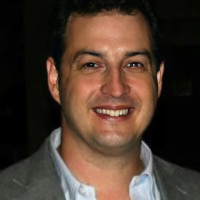Adaptive Expertise: How Augmented Generalists Will Shape the Modern Workforce
The landscape of the modern workforce is being shaped by technological disruption and new economic realities. The roles we play and the value we bring are often defined by the depth or breadth of our expertise. In the business and professional world, individuals are often labeled as “generalist” or “specialist”, depending on the scope of their knowledge.
Historically, the labor market has altered between the versatility of the generalist and the deep-rooted expertise of the specialist, favoring one or the other as economies and technologies evolved. With the rise of the digital economy, thought leaders like IDEO and McKinsey introduced the T-shaped individual—a persona that merges the breadth of a generalist with the expertise of a specialist.
Now, as artificial intelligence redefines the boundaries of capability and knowledge, it’s time for an archetype that challenges the historical perspectives on expertise and value in the workforce. I’m calling it the “Augmented Generalist“.
The Augmented Generalist represents the versatility of the traditional generalist but—equipped with advanced AI tools—can access deep specialized knowledge on demand, challenging the very notion of what it means to be an expert. This archetype is more than a bridge between the old dichotomies; it represents a seismic shift toward an intellectual landscape where the breadth and adaptability of knowledge eclipse the fixed silos of expertise.
The Augmented Generalist represents a shift from rigid job titles to fluid roles and from fixed skill sets to adaptable competencies
The Shifting Spectrum of Expertise
As we trace the lineage of the generalist and the specialist, we can see that their roles have been reevaluated with each technological revolution, altering which spectrum of expertise the workforce demanded. With every technological wave—from steam-powered engines to cloud computing—the value and limitations of each archetype have been reshaped.
Generalists were once considered the pillars of innovation. Today, they face an increasingly complex landscape where breadth of knowledge isn’t enough without the ability to quickly adapt to new technologies. In the digital era, they navigate an information-dense environment where their broad perspective is an asset, yet their lack of specialized knowledge can be a handicap in highly technical fields.
Specialists, on the other hand, have seen their deep, focused knowledge become both a fortress and a trap. Industrial and technological specializations have allowed for remarkable progress, but the same depth that brought about precision and expertise also risks obsolescence in a world where technologies evolve at breakneck speed. The specialist’s knowledge silo can make adaptability in new technological contexts more challenging.
The advent of the T-shaped professional was a response to the digital revolution, combining the generalist’s breadth with the specialist’s depth. This model aimed to create professionals who could collaborate across various domains while bringing deep knowledge to their primary field. However, even this more versatile archetype struggles with the rapid pace of innovation, where yesterday’s expertise may not solve tomorrow’s problems.
Enter the new variable in the equation: the integration of artificial intelligence into the workforce. The Augmented Generalist emerges as the answer to the continuous cycle of skill acquisition and obsolescence. By leveraging AI, this individual can pivot and adapt, accessing cutting-edge knowledge and specialized skills on-demand, thus redefining the expectations and capabilities of a versatile workforce.
Curricula need to be designed to foster adaptability, teaching students not just to learn, but to learn how to learn, with AI as a central element of this educational strategy.
The Capabilities and Potential of the Augmented Generalist
The Augmented Generalist represents a new era in workforce dynamics. They can leverage AI for on-demand specialization to gain insights into specialized fields quickly. Unlike traditional generalists, they can perform deep data analysis or engage with complex problem-solving in specific domains without years of dedicated study. This AI-assisted proficiency means they can navigate between roles or tasks that once would have required a team of specialists.
What sets them apart is their ability to solve problems by combining the versatility of their generalist background with the data-driven knowledge that AI offers. This creates a powerful approach to innovation, where holistic understanding meets specialized precision.
In a landscape where skill sets can become outdated as quickly as they’re acquired, the Augmented Generalist’s biggest strength is the ability to learn and adapt continuously. With AI as their perpetual mentor, these individuals redefine what it means to stay current, constantly updating their expertise to match the evolving demands of their industries.
The rise of the Augmented Generalist also reconfigures team dynamics and leadership models. Their proficiency in utilizing AI tools allows for more fluid and dynamic team structures, where leadership is less about having all the answers and more about asking the right questions and knowing how to leverage technology to find those answers.
Looking towards an AI-driven future, the Augmented Generalist represents a shift from rigid job titles to fluid roles and from fixed skill sets to adaptable competencies. In essence, they are the multi-tool operators in the toolbox of modern business, equipped to handle a diverse range of tasks with precision and agility.
Educational and Organizational Adaptation
The rise of the Augmented Generalist will necessitate a fundamental shift in both educational institutions and organizational structures. Preparing for this shift involves rethinking how we cultivate expertise and how workplaces can evolve to accommodate and leverage the unique capabilities of this new archetype.
Traditional education systems have been structured largely around the dichotomy of generalist vs. specialist. However, to nurture augmented generalism, educational models must emphasize flexibility, critical thinking, and the use of technology to access and apply specialized knowledge. Curricula need to be designed to foster adaptability, teaching students not just to learn, but to learn how to learn, with AI as a central element of this educational strategy.
As for workplace training, the development of Augmented Generalists calls for a shift from intermittent skill development to continuous learning cultures. Organizations must integrate AI tools into their training programs, enabling employees to enhance their cognitive flexibility and problem-solving skills. Training should not only be about imparting knowledge but also about enabling employees to navigate and utilize AI resources effectively.
Organizational structures will need to reflect the fluid nature of this new role. Hierarchical models may give way to networked or team-based structures where Augmented Generalists act as nodes that connect various specializations, facilitating collaboration and innovation. This could lead to a more project-based approach, where teams are formed around specific challenges or opportunities, rather than rigid departmental lines.
On a larger scale, policy and strategic planning must consider the implications of a workforce where AI-enhanced roles become the norm. This includes reevaluating job descriptions, performance metrics, and even compensation models to account for the augmented capabilities of employees. It also involves ensuring equitable access to AI tools and training, preventing a new form of digital divide from taking root within the workforce.
Lastly, the integration of AI into the workforce, especially in the capacity of enhancing human roles, raises questions of ethics and governance. Clear guidelines and ethical standards must be established to govern how AI is used to augment human expertise, ensuring that this partnership between humans and machines remains beneficial and does not lead to unintended consequences.
Embracing the Augmented Generalist in the Modern Workforce
The workforce of the future is one that fully embraces the Augmented Generalist, where individuals are not confined by the traditional boundaries of their knowledge but are instead empowered by AI to extend their capabilities infinitely. In this future, the combination of human creativity with machine intelligence will become the standard, paving the way for unprecedented levels of innovation and problem-solving.
Expertise is no longer seen as the accumulation of years of focused study in a narrow field, but rather as the ability to quickly assimilate and apply specialized knowledge, with AI serving as the catalyst for this rapid learning. The Augmented Generalist symbolizes the evolving face of expertise, where dynamic adaptability is the most valued asset.
The potential for growth and change is immense, with Augmented Generalists leading the charge in sectors ranging from healthcare to finance, from education to manufacturing. However, this shift is not without its challenges. Societies must navigate the transformation of job roles, the redefinition of what it means to be an expert, and the ethical considerations of AI-augmented workforces.
To realize this future, a concerted effort is needed from all stakeholders—educators, business leaders, policymakers, and workers themselves. Together, they must build the frameworks and support systems that enable the cultivation of Augmented Generalists, ensuring that the human-AI partnership flourishes in a way that benefits all.
The emergence of the Augmented Generalist is a call to action for society to rethink and retool its approach to work, learning, and collaboration. It is an invitation to embrace change with optimism, to envision a future where human potential is not replaced by AI but is instead augmented by it in ways that deepen our capabilities and broaden our horizons.
Further Reading

I'm a seasoned Digital Strategy professional with a penchant for the ever-evolving world of Generative AI and prompt engineering. When I'm not in front of my computer, I'm usually in the kitchen or playing board games. This blog is where I share insights, experiences, and the occasional culinary masterpiece.




